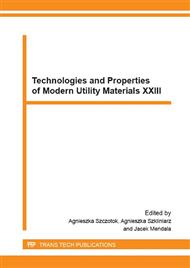p.240
p.244
p.248
p.252
p.256
p.263
p.267
p.271
p.275
Selection of Carbon Reducers for the Ferrosilicon Smelting Process
Abstract:
Selection of reducing agents for the ferrosilicon smelting process requires consideration of several difficult to reconcile criteria. The carbon reducers are not only a source of carbon as a substrate of the silica reduction reaction, but also play an important role by acting as a gas filter at the upper zones in working space of the ferrosilicon furnace. Reactivity of carbon reducers to SiO and degree of conversion on the SiC carbide are directly affecting the silicon recovery as well as the efficiency of the ferrosilicon process. The simultaneous fulfillment all requirements are difficult to satisfy by using only one type the reducer in the charge for the ferrosilicon process. This requires the use of a mixture reducers, and the adoption of a compromise that all requirements are met in the best possible extent. To choose the composition of carbon reducers mixture has been used simple physico-chemical model of the ferrosilicon process with two reaction zones between which there is a mass transfer. It has been shown that in the charge for the ferrosilicon furnace about 30% mass of Cfix carbon resulting from the reaction stoichiometry of silica reduction process should be in the form of the reducer with increased to SiO reactivity.
Info:
Periodical:
Pages:
256-259
Citation:
Online since:
February 2016
Authors:
Keywords:
Price:
Сopyright:
© 2016 Trans Tech Publications Ltd. All Rights Reserved
Share:
Citation:


